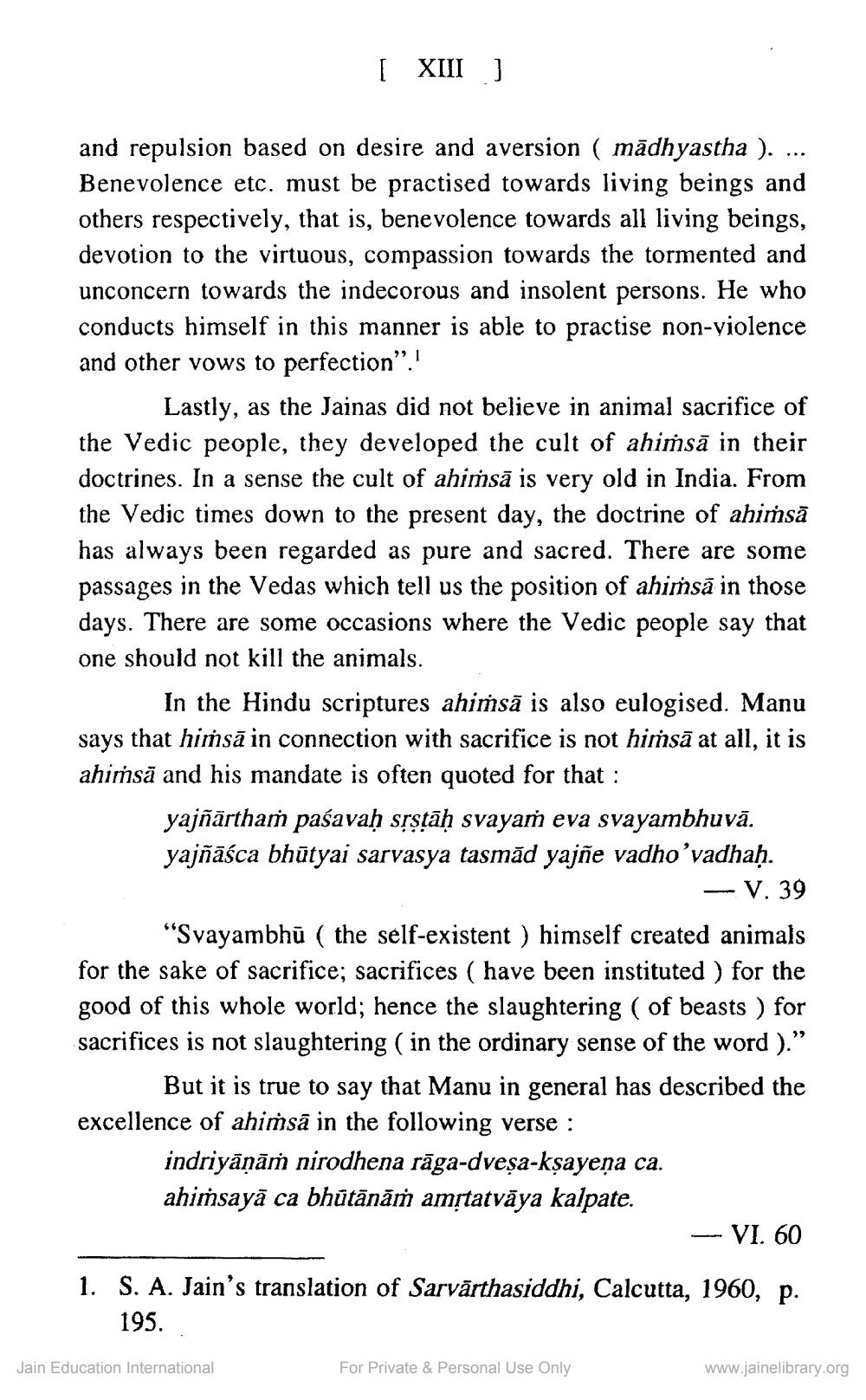________________
[ XIII ]
...
and repulsion based on desire and aversion ( mādhyastha ). . Benevolence etc. must be practised towards living beings and others respectively, that is, benevolence towards all living beings, devotion to the virtuous, compassion towards the tormented and unconcern towards the indecorous and insolent persons. He who conducts himself in this manner is able to practise non-violence and other vows to perfection".
Lastly, as the Jainas did not believe in animal sacrifice of the Vedic people, they developed the cult of ahimsa in their doctrines. In a sense the cult of ahimsā is very old in India. From the Vedic times down to the present day, the doctrine of ahimsā has always been regarded as pure and sacred. There are some passages in the Vedas which tell us the position of ahimsa in those days. There are some occasions where the Vedic people say that one should not kill the animals.
In the Hindu scriptures ahimsā is also eulogised. Manu says that himsă in connection with sacrifice is not himsā at all, it is ahimsa and his mandate is often quoted for that :
yajñārthaṁ paśavaḥ sṛṣṭāḥ svayaṁ eva svayambhuvā. yajñāśca bhūtyai sarvasya tasmād yajñe vadho'vadhaḥ.
- V. 39
"Svayambhu (the self-existent) himself created animals for the sake of sacrifice; sacrifices (have been instituted) for the good of this whole world; hence the slaughtering (of beasts) for sacrifices is not slaughtering (in the ordinary sense of the word )." But it is true to say that Manu in general has described the excellence of ahimsa in the following verse:
indriyāṇām nirodhena rāga-dveṣa-kṣayena ca. ahiṁsayā ca bhūtānāṁ amṛtatvāya kalpate.
VI. 60
1. S. A. Jain's translation of Sarvarthasiddhi, Calcutta, 1960, p. 195.
Jain Education International
For Private & Personal Use Only
www.jainelibrary.org




